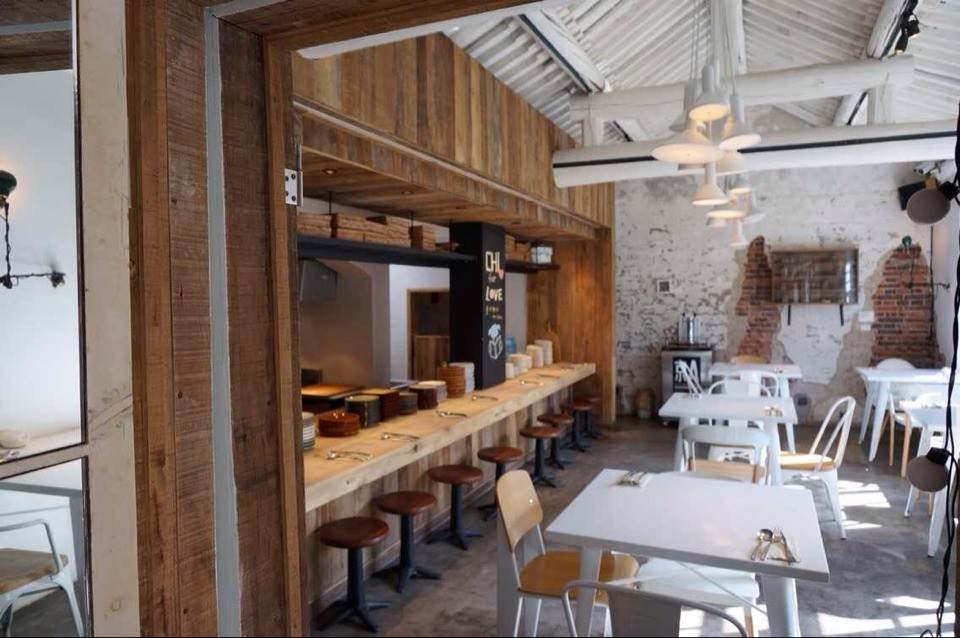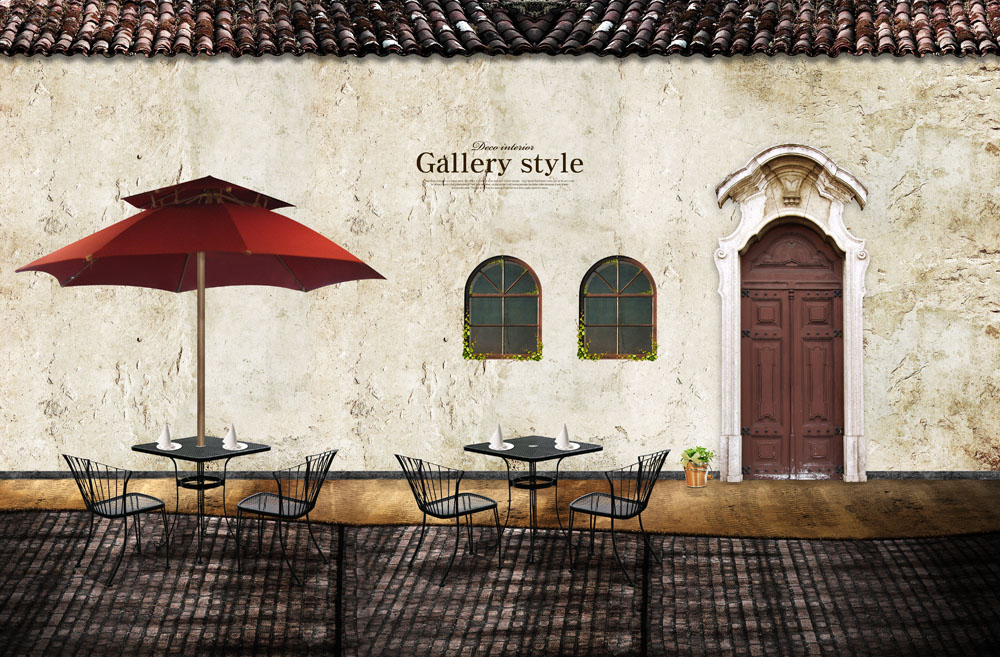How to make customers fall in love with stores? Seven moves for interaction

The so-called interaction is that the two sides move with each other. In interactive marketing, one side of the interaction is the consumer and the other is the enterprise. Only by grasping the point of common interest and finding ingenious communication opportunities and methods can the two sides be closely combined. In particular, interactive marketing emphasizes that both sides take a common action.
Nowadays, many hotels and restaurants are trying to do it, and the improvement is only in terms of services and dishes, but people have been far away from meeting the material and physical needs for eating. We hope that in addition to meeting the needs of food and clothing, we can enjoy the spiritual rest outside of life and work in the restaurant, so that the spirit can be relaxed to a certain extent. Interact with customers, establish a corporate culture, let customers have a sense of participation, relax and rest while tasting dishes, so as to make customers fall in love with the restaurant.
1:Kogi uses social media to interact with customers
Can stalls and vendors without a fixed place of business make a name for themselves in the catering industry? In the United States, a fast food car called Kogi, which sells Korean fried taco, has become one of the most well-known mobile restaurants in the region in just a few months with the help of Internet forces such as T w itter and viral word-of-mouth.
In terms of production, fried taco is just a very common popular snack, but Kogi has mastered the essence of web2.0: interactive communication, real-time feedback. As the mobile fast food truck has to travel all over the city and cannot advertise the sales at the next stop, members of Kogi simply report the location of the dining car in real time on T witter. When the police blow Kogi away from a street corner, fans can know the location of the next stop from Twitter and wait before the police arrive. When Kogi is late, they will explain the reason on Twit-ter, saying, "can you give us another 10 minutes?" Forever fried taco and other information, so that the beginning of wavering diners continue to wait in line. In addition, Kogi will try every means to communicate with diners.
For example:
1: ask fans to give advice for it.
2: help design T-shirts and name K ogi's dining car, etc.
3: diners can also interact with each other through the Internet:
4: share their experiences of buying Kogi and frying taco on Twitter
5: upload relevant videos and pictures to the official website, Y ouT ube, Flickr, etc.
This not only helps to maintain regular customers' interest in Kogi, but also is equivalent to free advertising for Kogi to attract more potential consumers. In fact, new diners are largely seduced by Kogi's posts on T w itter, and word of mouth on the Internet further expands the publicity of Kogi.
2: hold a salon to interact with customers
In order to give customers a profound dining experience, many restaurants will more or less launch some interactive activities: common interactions include asking customers to write notes and paste them on the wall, or soliciting photos of customers to make a photo wall. the purpose of this is to make customers miss the restaurant. In addition to the above two, the Guangdong chef also launched a customer salon to attract more popularity.
The restaurant organizes a salon composed of customers once a month, with about 30 people at a time. The salon is divided into three parts.
1. Taste the new dishes from the kitchen, and then each write down the materials they think are contained in the dishes, and those who write the right ones will be rewarded accordingly.
In this process, we can not only let customers interact happily, but also let them put forward their own opinions and ideas, such as: according to everyone's taste, what people will like more, remove what everyone does not like, and so on. This also plays a key role in the introduction and improvement of dishes, and at the same time, we can understand a preference of the public taste. And, because they participate in the last process of the new dish, they have a sense of participation, and they will mention the dish to their friends, colleagues and relatives in their lives. Virtually also carried out a promotion for the new dishes.
2. The manager or the chef will personally teach you how to make a dessert.
This is a giving process that allows customers to understand the production process and gain knowledge from it. In the case of income, it can also stimulate their consumption and make them feel that they come to this store not only to eat, not only to enjoy the environment and services here, but also to get a lot of things to make them feel good value for money. to like this store even more. Let the image of the hotel be deeply rooted in their hearts and identify with it from the heart.
3. Provide raw materials and DIY by yourself.
Provide participants with raw materials and let them DIY themselves. In their production process will burst out a lot of ideas and problems, at this time to communicate with them, you will be able to get something that has been ignored. The so-called brainstorming, although they are not necessarily professional. But they are the object of direct service and acceptance of the restaurant, and everything the restaurant does is for them. So, at this time, their ideas can provide some good inspiration to the restaurant.
4. Leave photos and messages after the event to understand their thoughts and feelings.
In the interaction with customers, not only customers can get harvest, operators can also get a lot of harvest. Let customers feel from the bottom of their hearts that while eating in the restaurant, the restaurant can also be a good place for everyone to relax, rest and relax.
3: dance the drum dance to interact
In the prime time of dining, guests concentrate on spending, so it is inevitable that there is a shortage of seats. If the restaurant only serves the guests who have already sat down in the restaurant, while neglecting the guests who do not have a seat outside, resulting in the loss of guests, it will greatly affect the turnover rate of the restaurant, and the restaurant must give full play to its own characteristics. Yunhai cuisine restaurant has many local boys and girls in Yunnan, who are not only good at singing and dancing, but also enthusiastic to people. Yunnan characteristic encouragement can well attract the attention of guests, for guests, the cost of waiting is to give up other things to do during this period of time, especially when you are seated, it is a good choice to enjoy the performance with Yunnan characteristics. With a strong sense of rhythm and simple operation, a young man, wearing clothes with Yunnan characteristics, interacted with the guests in the waiting area. The guests were very willing to clap two small drums and take some photos. The young man also patiently explained to the guests the local customs and customs of Yunnan. When the guests listened with relish, they did not feel that time went by slowly, making the time of waiting for seats interesting and meaningful.
4: leave the picture, leave the beauty
Beautiful decorative paintings are hung on the walls of most restaurants, but here, the decorative paintings on the walls are made from photos left by customers, some of which are enlarged and framed, while others are affixed to the walls by customers themselves. To form a beautiful scenery.
These photos not only decorate the walls of the hotel. It also gives customers a sense of self. Because there are customers' own photos left here, so that customers will get a certain degree of satisfaction. Also will often introduce friends to eat here, and tell friends to hang their own photos on the wall, not only let customers have face, but also let the hotel take root in the hearts of customers. Customers will think that part of the restaurant belongs to them, so they will pay more attention to it and will often come here to eat. Simple photos not only make the restaurant more beautiful, but also make the restaurant have its own characteristics and personality, giving customers a sense of intimacy and freshness. There is not only the freedom to eat as if you were eating yourself, but also the enjoyment and delicacy of eating in a restaurant. I believe that such a restaurant will leave a deep impression on the hearts of customers.
5: random interaction: the story of the waiter showing the customer around the kitchen
Xiao Li invited three or four of his friends to a restaurant. Because the hotel was full and there was no reservation in advance, he could not find a seat. Although there is a special waiting area with free drinks, snacks and poker to pass the time, Xiao Li is unwilling to wait in line because he is in a hurry. When he was about to leave, a waiter who arranged a seat at the door gently blocked him with one arm and said, "Please wait a moment, sir. I'll ask for you again." Then he called the waiter on each floor again on the walkie-talkie to confirm whether there was a seat. When he learned that it was not available, the waiter said to Xiao Li, "I'm sorry, sir, I really can't arrange a seat. If you don't want to wait, you can visit our kitchen."
Xiao Li wanted to leave, but he was very interested to hear the waiter say this, because the chefs in many restaurants are not allowed to visit. When he walked into the kitchen, Xiao Li had only one feeling: clean. He has hardly seen such a clean kitchen, the decoration is very simple, just white tiles, but without any water, grease and dust, all the dishes are distributed. He was so interested that after asking the waiter's permission, he even picked up a lemon and cut it. Of course, the waiter was there to guide him on how to cut the lemon slice thin and evenly. As a result, Xiao Li spent time waiting for a seat in the kitchen, and the waiter used his wisdom to save a customer who would have been lost.
What does this case tell us? The way for customers to visit the kitchen will certainly not be written in the staff code, which is the result of the interaction between the waiter and the customer. We often encounter such a situation, when we ask some problems that waiters can't solve in some places, many places just say "I'm sorry" without thinking about how to solve these problems. Sometimes, the solution of a problem may save a customer. The author personally saw a customer want to leak a spoon in another restaurant, and the waiter said no, because it was a small hot pot, so the hotel did not provide it, and then the customer left before finishing his meal and said, "what stupid restaurant will never come again?"
6: leave a note, leave memories
Every customer who dines here can get a note for free, writing down what he wants to stay, whether it is his or her feelings about the meal or his or her mood. Then it can be pasted on the wall of the restaurant. In the future, when customers come to dinner again, they can also see the note they left before.
Now many restaurants can give customers perfect service, good dishes, and excellent dining environment. But after the customer has eaten, the only thing the customer can leave behind is the money left when he pays the bill. Customers are very satisfied with the restaurant, like it very much, and can only leave tips and simple verbal compliments, which are not enough to express customers' psychological feelings and feelings. After customers leave the restaurant, these feelings will fade over time. And now the catering industry is highly competitive, excellent service and dishes, other hotels can also do, customers will not necessarily choose and identify this restaurant. However, the note left by the customer after the meal is not only a way given by the restaurant, but also a wealth left by the customer to the restaurant. In the note, you can get a lot of information about whether customers come to the restaurant simply to eat, or because of a gathering of friends, or for other reasons. What do you think about the meal, even the character of the customer, and so on. This is equivalent to indirectly doing a free market research for the restaurant, and can also provide information to managers and operators at any time, so as to adjust the dishes and other aspects at any time. At the same time, customers will be deeply impressed by the restaurant because they have left a note, and they will often remember that they often come to the restaurant to eat. This has retained a lot of repeat customers.
Source: Chinese drink KuaiBao
Important Notice :
前街咖啡 FrontStreet Coffee has moved to new addredd:
FrontStreet Coffee Address: 315,Donghua East Road,GuangZhou
Tel:020 38364473
- Prev

It turns out that wine and coffee are so similar.
If you love wine, do you also have a fondness for coffee? As the two major health drinks loved by fashion-seeking white-collar workers, wine and coffee have become an indispensable part of life. The fragrance of wine and the fragrance of coffee can bring people different sensory enjoyment. With the promotion of life concepts such as elegant leisure, coffee and grapes
- Next

The rapid development of leisure coffee chains in 2015
With the opening of the market, the competition between the catering industry has become increasingly prominent; only continuous research, only continuous learning, can improve the level of leisure coffee chains. Therefore, investors operating leisure coffee chains must constantly master new knowledge in order to meet the needs of the market, that is to say, with the development of catering to join the market, consumers are interested in leisure coffee chains.
Related
- What brand of black coffee is the most authentic and delicious? what are the characteristics of the flavor of the authentic Rose Summer Black Coffee?
- Introduction to the principle and characteristics of the correct use of mocha pot A detailed course of mocha pot brewing coffee is described in five steps.
- Which is better, decaf or regular coffee? how is decaf made?
- How much is a bag of four cat coffee?
- How about four Cat Coffee or Nestle Coffee? why is it a cheap scam?
- Which is better, Yunnan four Cats Coffee or Nestle Coffee? How about cat coffee? is it a fake scam? why is it so cheap?
- How about Cat Coffee? what grade is a hoax? which instant coffee tastes better, four Cat Coffee, Nestle Coffee or G7 coffee?
- Process flow chart of coffee making-Starbucks coffee making process what coffee tastes good at Starbucks
- The top ten best coffee beans in the world Rose summer coffee or Tanzanian coffee tastes good
- Yunnan four cat coffee is good to drink?_four cat coffee is a big brand? four cat blue mountain coffee is fake?

